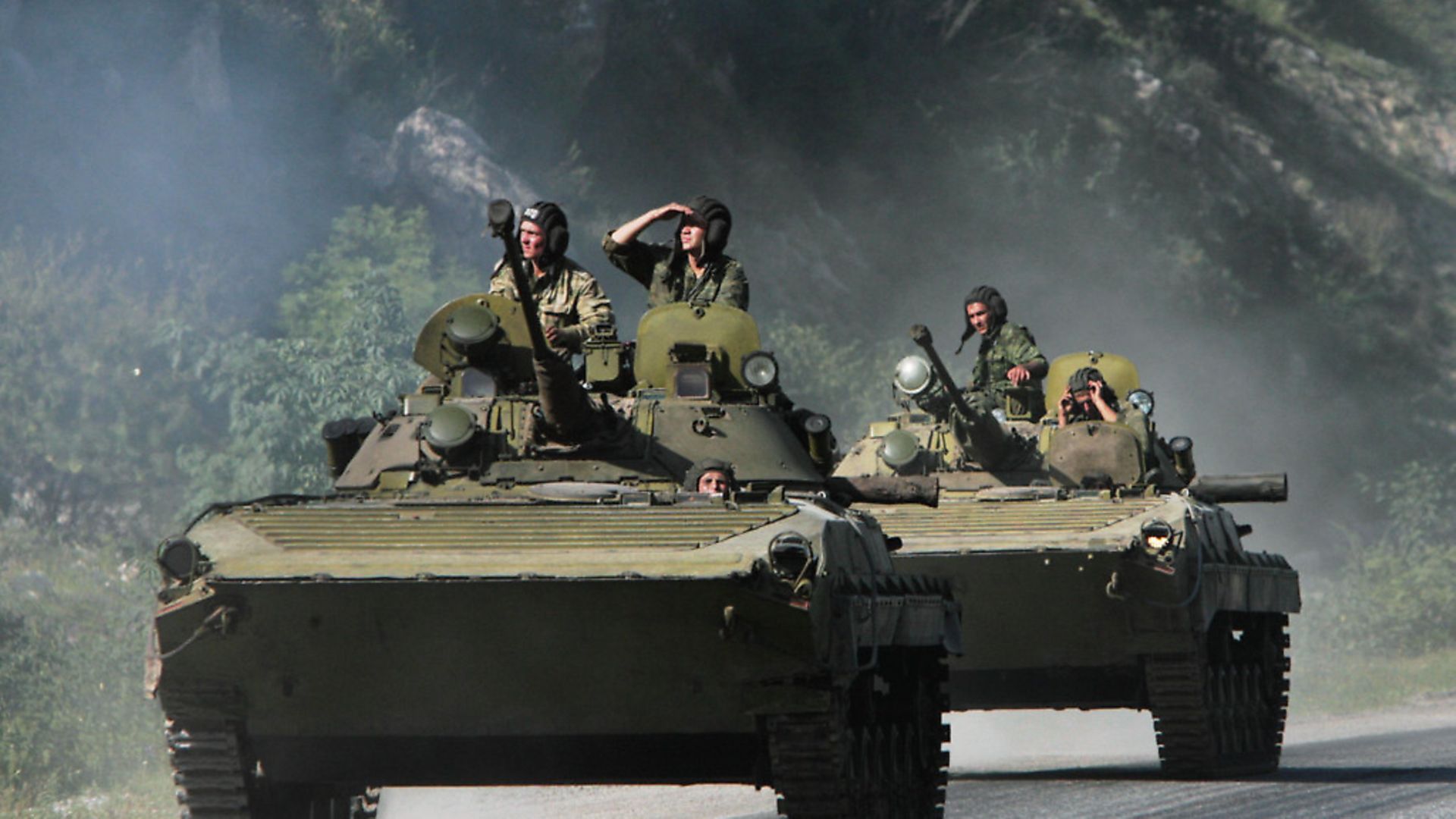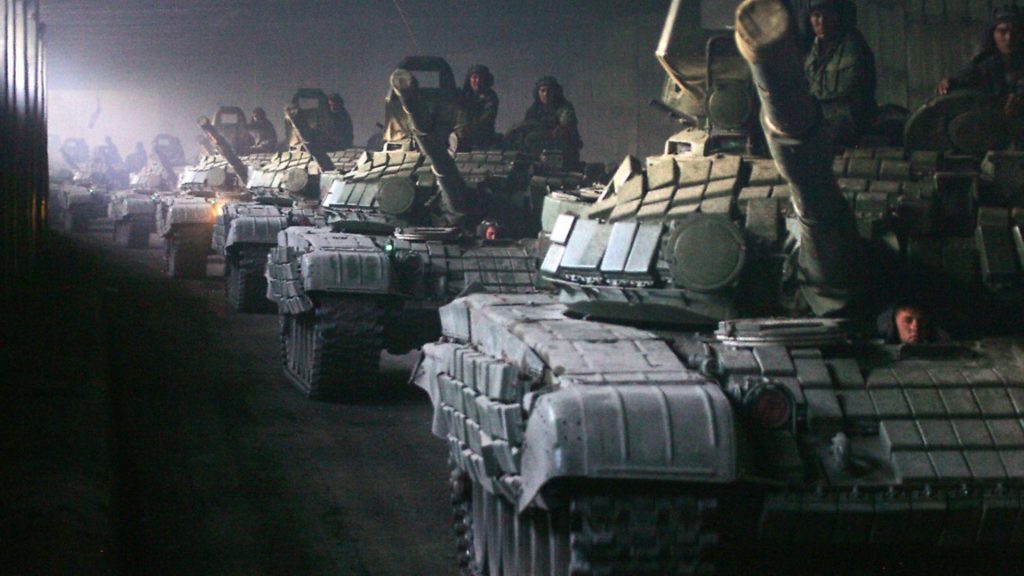
On its 10th anniversary, James Rodgers looks back on a conflict which could turn out to be one of the 21st century’s great turning points.

For all the Russian Army had tried to put on a show, no one could control the stench of rotting flesh.
This was supposed to be a good news story for Russia. It was handing back territory it had seized from its southern neighbour Georgia during a short war two months earlier. Journalists were lined up at the side of the northbound road to watch a column of Russian armour – forces which had just relinquished a base they had built on enemy territory – go past.
Everything went more or less to plan – although the sense of orderly military withdrawal was undermined by the stink of decay. Somewhere close, but out of sight, the carcass of a dead animal – perhaps even the corpse of a dead soldier – lay unburied. Death darkened the autumn sunshine.
South Ossetia had barely registered with the world’s news organisations until that summer. On the night between August 7 and 8 2008, after weeks of rising tension, Georgian troops launched an assault on South Ossetia’s main town, Tskhinvali. South Ossetia, along with another region of the country, Abkhazia, had been outside the control of the Georgian government since wars in the early 1990s which followed the collapse of the Soviet Union. Both regions had moved closer and closer to Russia, benefiting from financial support from Moscow.
This frustrated Georgia’s energetic, western-looking, and staunchly pro-Washington government. Coming to power after the 2003 ‘Rose Revolution’, President Mikheil Saakashvili was keen to reunite the entire country under his administration’s control. By the summer of 2008, this ambition was leading to exchanges of fire between government troops and separatists, the latter benefiting from the presence of Russian forces. The Russians were officially there as peacekeepers – and were welcomed as such by many in the separatist regions. The Georgian government preferred to see them as occupiers.
As this small corner of the mighty Caucasus mountains headed towards war in the dog days of 2008, there were bigger issues at stake: issues of global importance which have helped to shape the confrontational eastern edge of today’s Europe.
The reformist Georgian government had made its army the focus of its plans to forge a new place in the world. Georgian soldiers had served in Iraq alongside the American and British troops who led the 2003 invasion. The main road to Tbilisi airport was even renamed for George W. Bush (one of few countries in the world who would make such a move, one western diplomat suggested to me during a visit in 2006). The Georgian aim at that time was membership of NATO.
For Russia that was a red line more clearly defined than any other. Western policymakers either dismissed or ignored Moscow’s concerns that, as NATO expanded eastwards after the end of the Cold War, Russia was being surrounded. Countries of the former Soviet bloc had joined – among them former parts of the Soviet Union itself. August 2008 was when Russia went to war to stop that. President at the time was Dmitry Medvedev – three months into his term, having taken over from Vladimir Putin, who was serving as prime minister, but remained the ultimate power behind the throne.
The Georgian assault on Tshkinvali was initially successful, but Russia’s response was rapid and crushingly effective. Within days, Georgian troops had been driven out of South Ossetia and were ceding territory beyond the breakaway region to the advancing Russian army. There was even speculation at one point that Moscow’s troops might go all the way to the capital, and remove Saakashvili from office.
Western politicians tried to influence the situation, with the then foreign secretary, David Miliband, even reportedly hearing a rather undiplomatic, four-letter-worded, description of the Georgian president from Sergei Lavrov, the Russian foreign minister. Days later, a French peace plan (France then holding the EU presidency) brought an end to the fighting.
One of the conditions of that deal was the withdrawal of Russian troops from positions beyond South Ossetia’s administrative boundary. That was what I witnessed that morning in October.
Russia’s experience in that conflict and its immediate aftermath were an education. These lessons have shaped Russia’s use of both military force, and the news media, in international relations ever since. In that sense, they have also shaped the Europe in which we live today.
To begin with, there were aspects of Russia’s military campaign which did not go so well. ‘The Russians may have hoped that the mere appearance of Russian heavy units would have precipitated an immediate Georgian withdrawal,’ suggested a paper published at the time by the Royal United Services Institute. This did not happen, and the Georgian Army fought on longer than their much bigger foe might have anticipated.
As always in modern war, the media battle was also seen as vitally important. Saakashvili – a fluent English speaker – spent an astonishing amount of time on television for a president whose country was at war. He gave live interviews to international news channels, pleading his country’s case. Essentially, though, he had miscalculated – perhaps believing that his administration’s closeness to the United States would bring greater support. It did not. Washington showed no desire to risk confrontation with its Cold War enemy.
That enemy proved itself less adept at the media battle than Georgia. Both sides at that time had western PR companies spinning for them, but the Russians seemed to understand the information war less well. RT, then still proudly known as Russia Today, was not treated seriously by the Kremlin. Given no access themselves, they were reduced to rebroadcasting an interview which I had been given for the BBC with Lavrov.
Six years later, when Ukraine seemed to be looking too longingly westwards for Russia’s liking, the approach was different. ‘Little Green Men’ – soldiers without insignia which might identify them – took over Crimea, part of Ukraine which Moscow then annexed, sealing its action with a hasty referendum to approve the takeover.
Russia Today was disguised by now too, having become RT. That the military and media disguises were not entirely convincing mattered little. The whole point was just to make onlookers doubt what they saw – ‘Question More’ – as RT’s slogan put it, while Russia achieved its objectives.
Ten years on from the short summer war in South Ossetia, there is little immediate prospect of any more former Soviet states joining NATO. Neither of the two countries who then wanted to do that – Georgia and Ukraine – is, thanks to Russia, in complete control of its own territory.
In the EU, Russia has admirers among the new government in Italy, where the deputy prime minister, Matteo Salvini, said recently of Vladimir Putin, ‘I believe he has done a lot for his people’.
For the group of correspondents taken to watch the troop withdrawal that day, some details linger. The Russian Army liaison officer asked to borrow a reporter’s phone because he hadn’t sufficient credit on his own. It is harder to imagine that happening now. The truck we travelled in made it hard to see much of the war zone through which we passed – only the back was open. Presumably our eyes were to be shielded from seeing damage to civilian homes.
I never found out whether the rotting remains were animal or human – but it feels now like the death of the period after the Cold War when Russia and the West tried to be friends.









